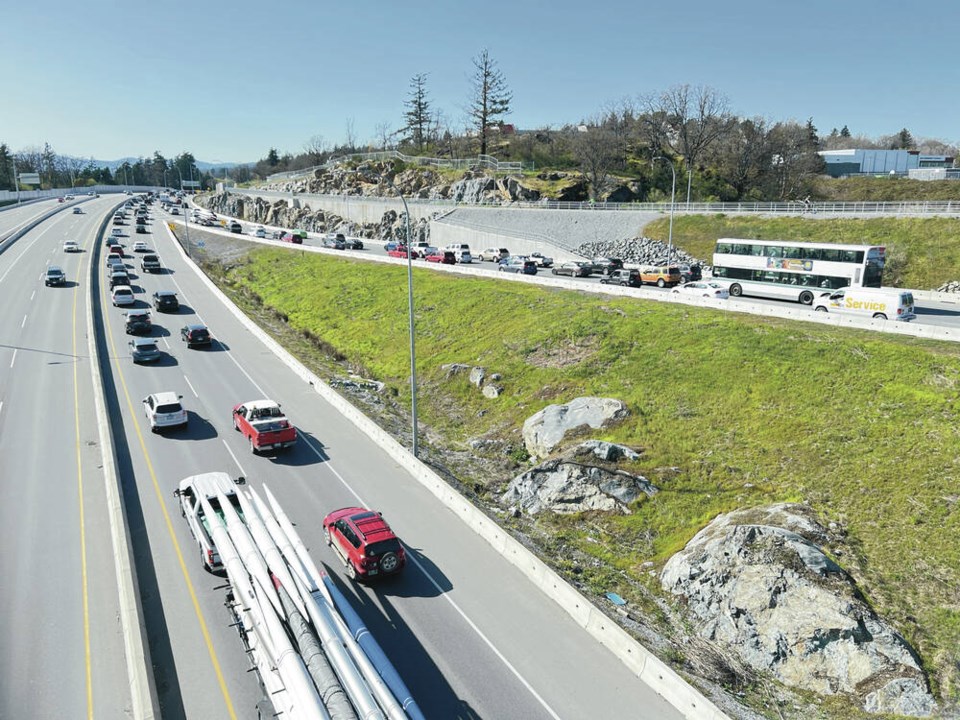The unimaginable tragedy ending in the deaths of 15 seniors in that bus versus semi-truck crash last week on the Trans-Canada highway near Carberry, Manitoba, will raise many questions over the next 12 to 18 months as investigators painstakingly piece together how this horror unfolded.
Entering a busy highway, either from a standard intersection or via an on-ramp, is one of the most challenging manoeuvres our modern road systems put before drivers, regardless of their level of experience. Many find it nerve-wracking even in the best of conditions.
Even if you’re travelling locally, make sure you know you’re clear on your route and destination. Pay attention to road signs, especially with all the construction going on throughout the Island. If you are not familiar with the area, use a GPS or a map to guide you. It never hurts to check the traffic conditions online or on the radio, and avoid peak hours or congested areas when possible.
It sounds ridiculously obvious, but when entering a busy highway at a standard (right- angled) intersection, which might be controlled only by a flashing red light or just a stop sign, use your eyes. In this context, I mean use them to also measure the speed and distance of passing vehicles.
By finding a fixed point on the highway then counting the time that cars take to move from that point to your position with the “one one thousand, two one thousand…” method you can better judge the time and distance from vehicles approaching your position.
Remember it will take you three to five seconds alone just to leave your stopped position, turn on the highway and start gaining speed. A vehicle travelling towards you at 100 km/h will be moving at 28 metres (or 92 feet) per second. So in that scenario spotting an oncoming vehicle three to five seconds distant is not enough time to enter safely.
If you’re at a stage in your driving life where you’re having difficulty with perception of vehicles approaching at speed, then consider an alternative route onto the highway, such as an on-ramp, or at least travelling when traffic is lighter.
Highway entrance ramps make things much safer but they’re not a cake-walk either.
Entrance ramps can be straight, curved, uphill, downhill, or level with the highway. The speed limit on the ramp can vary depending on the design and location. Adjust your speed according to the curve and slope of the ramp. Entrance and exit ramp crashes happen all the time. Steady, smooth speed increases are the key. Do not accelerate too fast or too slowly, as this can throw off other drivers and cause unnecessary evasive manoeuvres.
The acceleration part of the entrance ramp is vital and must be used correctly. It is specifically designed to allow you to increase your speed to match the traffic on the highway.
As soon as you enter the acceleration lane, turn on your signal to indicate your intention to merge. Scan the right-hand lane of the highway for gaps in traffic. Use your mirrors and blind spots to check for vehicles behind and beside you. Do not stop or slow down in the acceleration lane unless there is an emergency.
The worst case scenario happens when an entrance ramp driver fails to merge, then comes to a stop at the end of an on-ramp. It doesn’t happen often, but I’ve seen it several times in my driving life. Don’t do it. If there is an emergency, signal right and get onto the shoulder while being extra aware of cars behind you on the on-ramp.
The merge area is the part of the road where the acceleration lane ends and you have to join the traffic on the highway. It might be marked by a solid or dashed line, depending on whether it is mandatory or optional to merge. As you approach the merge area, look for a suitable gap in traffic that is large enough for your vehicle.
It’s never a race at this point. It’s OK to decelerate a little in order to smoothly and safely enter the highway. Accelerate or decelerate as required for the traffic. Do not cut off or tailgate other vehicles. When it is safe, steer smoothly into the gap and turn off your signal.
Be alert — no chatting, phone or music — all driving. Merge confidently and do not hesitate or change your mind at the last minute. There’s always another off-ramp down the road.
Being courteous and co-operative is the best way. Do not force your way into traffic or block other drivers from merging.
Smoothly and confidently entering a highway shows other drivers you know what you’re doing and makes things easier and safer for everyone.
>>> To comment on this article, write a letter to the editor: [email protected]


-thumb.png;w=120;h=80;mode=crop)
